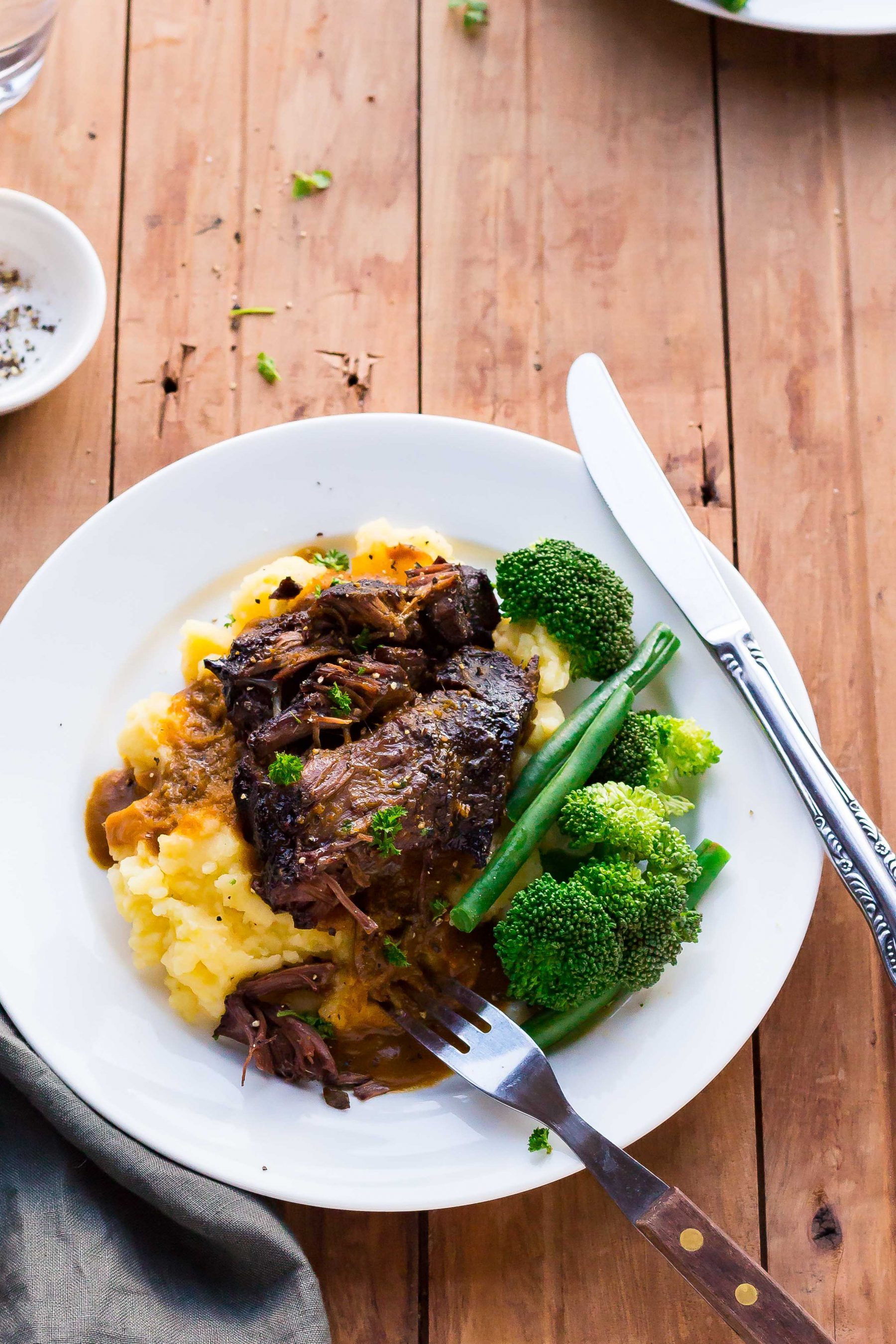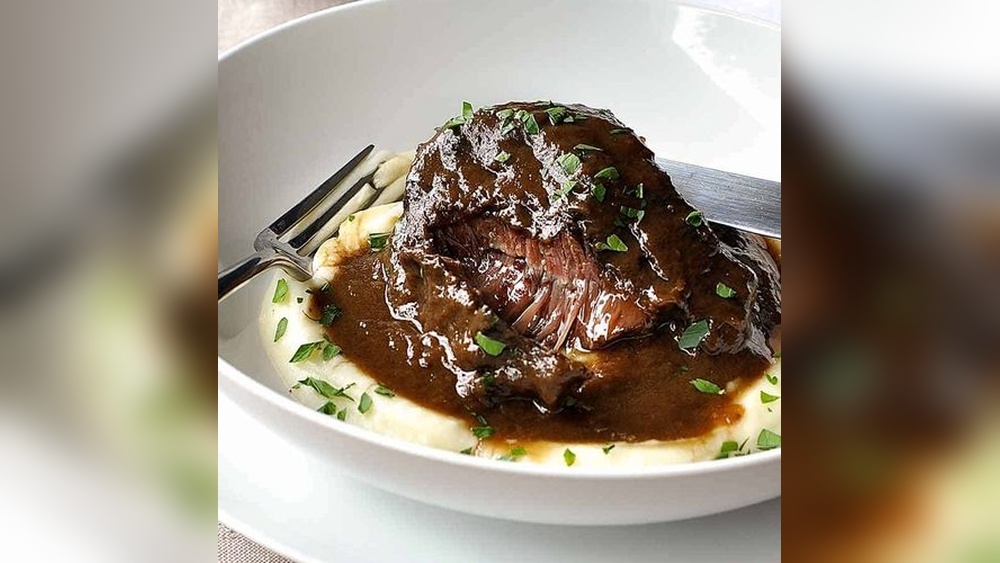If you’ve never cooked beef cheeks before, you’re in for a treat. This cut of meat might sound unusual, but once you know how to cook beef cheeks the right way, you’ll discover a rich, tender, and flavorful dish that’s surprisingly easy to make.
Whether you want to impress your guests or enjoy a comforting meal at home, mastering this recipe will elevate your cooking game. Keep reading, and you’ll learn simple steps and expert tips to turn beef cheeks into a melt-in-your-mouth masterpiece you’ll crave again and again.
Choosing Beef Cheeks
Beef cheeks should look fresh and have a deep red color. Avoid any that appear pale or have dark spots. The meat should feel firm but slightly soft to touch. Good marbling is important as it adds flavor and tenderness.
Buy beef cheeks from trusted sources like local butcher shops or specialty meat markets. They often have fresher and higher quality cuts than big supermarkets. Some grocery stores carry beef cheeks but check the packaging date carefully.
| Where to Buy | What to Look For |
|---|---|
| Local Butcher | Fresh, firm, good marbling, deep red color |
| Specialty Meat Markets | High quality, fresh packaging, no discoloration |
| Supermarkets | Check packaging date, avoid pale or dark spots |

Preparing The Meat
Start by trimming any excess fat and silver skin from the beef cheeks. This helps the meat cook evenly and improves texture. Use a sharp knife and work carefully to avoid cutting too much meat.
Next, clean the meat by rinsing it under cold water. Pat dry with paper towels to remove moisture. Dry meat browns better during cooking.
Seasoning is simple but important. Use salt and black pepper as a base. For extra flavor, add garlic powder, onion powder, or smoked paprika. Rub spices evenly on all sides.
Allow the meat to rest for a few minutes so the seasoning soaks in. This step makes the beef cheeks taste richer and more delicious after cooking.
Cooking Methods
Slow cooking beef cheeks makes the meat very tender. It takes several hours at low heat. This method allows the collagen to break down, giving a soft texture. You can use a slow cooker or a low oven for this.
Braising in the oven means cooking beef cheeks in a covered pot with some liquid. The oven keeps a steady low temperature. This helps the meat soak up flavors and become juicy. Vegetables and herbs can be added for more taste.
Using a pressure cooker speeds up the cooking time. It cooks beef cheeks in about one hour. The pressure and steam make the meat tender fast. This is good for busy cooks who want soft beef cheeks quickly.
Sous vide technique cooks beef cheeks in a vacuum bag in water. The temperature stays low and steady for hours. This method keeps the meat juicy and tender. After cooking, a quick sear adds color and flavor.

Enhancing Flavor
Browning the meat first helps lock in juices and build rich flavor. Use a hot pan and a little oil. Cook each side until deep brown, about 3-4 minutes per side. This step adds a tasty crust and color.
Adding aromatics and spices boosts the dish’s aroma and taste. Common choices include garlic, onions, bay leaves, and thyme. Spices like black pepper, cumin, or paprika can give warmth and depth. Toss these in after browning the meat.
Using broth and wine creates a flavorful cooking liquid. Beef broth adds richness, while red wine brings acidity and complexity. Pour enough to cover the meat halfway. This helps keep the cheeks moist and tender during slow cooking.
Tenderizing Tricks
Low and slow cooking makes beef cheeks very tender. Cooking at low heat for several hours breaks down tough fibers. This method keeps the meat juicy and soft. Using a slow cooker or oven works well for this.
Marinating beef cheeks adds flavor and helps tenderize. Ingredients like red wine, vinegar, or citrus juice work best. Let the meat soak for a few hours or overnight in the fridge. Herbs and garlic in the marinade boost taste.
| Marinating Options | Benefits |
|---|---|
| Red wine | Softens meat, adds rich flavor |
| Vinegar | Breaks down fibers, tenderizes |
| Citrus juice | Brightens taste, helps soften |
| Garlic and herbs | Enhances aroma and flavor |
Serving Suggestions
Beef cheeks taste best with soft and simple side dishes. Mashed potatoes or creamy polenta soak up the rich sauce perfectly. Roasted root vegetables like carrots and parsnips add a sweet contrast.
Steamed green beans or sautéed spinach bring fresh color and lightness to the plate. A simple salad with a light vinaigrette can balance the dish well.
| Side Dish | Why It Works |
|---|---|
| Mashed Potatoes | Soft texture, absorbs sauce |
| Roasted Carrots | Sweetness contrasts richness |
| Steamed Green Beans | Light and fresh flavor |
| Creamy Polenta | Silky texture, mild taste |
| Simple Salad | Fresh and crisp balance |
For presentation, serve beef cheeks on a flat plate with sides around. Drizzle sauce over the meat and potatoes for a nice shine. Garnish with fresh herbs like parsley or thyme.
Use rustic plates for a homey feel or white dishes for a clean look. A sprig of rosemary or a lemon wedge adds color and aroma.
Storing And Reheating
Beef cheeks should be stored in an airtight container. Keep them in the fridge for up to 3 days. For longer storage, freeze them. Wrap tightly with plastic wrap or foil before freezing. Label the package with the date.
Reheat beef cheeks gently to keep them tender. Use a low heat setting in an oven or microwave. Cover the meat to hold moisture. Avoid high heat; it can make the meat tough.
Slow reheating in a sauce or broth helps keep flavor and moisture. Stir occasionally to heat evenly. Do not reheat more than once for safety and quality.

Frequently Asked Questions
What Cooking Method Would You Choose When Cooking Beef Cheeks And Why?
Choose slow braising for beef cheeks to break down tough fibers and achieve tender, flavorful meat. Slow cooking enhances richness and melts connective tissue perfectly.
What’s The Secret To Flavorful Beef Cheeks?
Sear beef cheeks to develop rich flavor. Slow cook them in broth with garlic, onions, and spices until tender. This enhances taste and texture.
What Is The Best Way To Tenderize Beef Cheeks?
The best way to tenderize beef cheeks is to cook them low and slow. Use a pressure cooker to reduce time while ensuring fall-apart tenderness. Searing before cooking enhances flavor and texture.
Are Beef Cheeks Hard To Cook?
Beef cheeks require slow, low-temperature cooking to become tender. They are easy to prepare but need time. Using a pressure cooker speeds up the process and ensures softness.
Conclusion
Beef cheeks offer rich flavor and tender texture when cooked right. Slow cooking or pressure cooking works best to soften the meat. Browning the cheeks first adds a deeper taste. Use simple spices to keep the flavors balanced and natural.
Cooking low and slow creates a melt-in-your-mouth experience. Enjoy this affordable, delicious cut in stews or braises. With patience, you can make a hearty, satisfying meal. Give beef cheeks a try for a tasty change.

